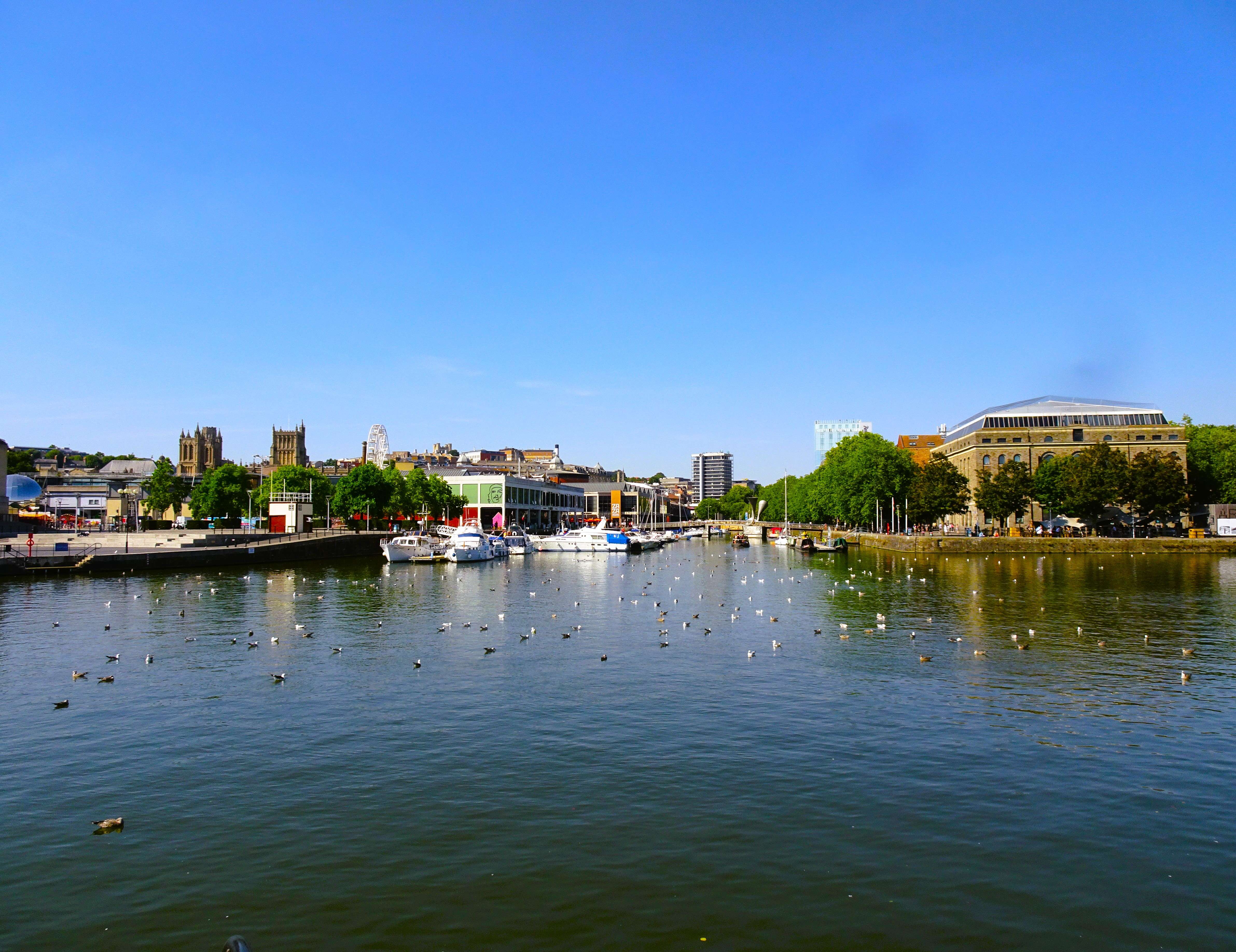The harbourside is an ideal place to start a tour of the city. Fresh and charismatic with restaurants and homes fronting the river, there are various bridges spanning smaller waterways. They are peaceful spots to watch a myriad of boats and ferries going to and fro, and to observe older vessels moored to the edges.
An impressive one is the Matthew, a replica of the sailing caravel that voyaged to North America in the 15th century under the captaincy of John Cabot. Its emerald paintwork and tar-covered ropework show the detailed skills back then. Going aboard, the stewards are welcoming, informative, and passionate about the craft. It seemed fitting to see it on the same day as the SS Great Britain that I wrote about last week.
The quayside merges with Millennium Square. On approach, chatter and laughter can be heard from bars and cafés as people socialize outside. An ornamental wall of water cascades near the Recharging Tree activated by solar panels – phones can be charged in the shade of the modern sculpture. There is no missing the Planetarium, an astounding mirrored orb reflecting scenes around it, including me taking a photograph.
Wandering along King Street, there are plenty of venues to stop for refreshments. Mr Word Loft and I chose the Old Vic, a fascinating place with sections of the restored Georgian theatre still intact to ponder over while having a drink or a bite to eat. It’s a working theatre, so on our next trip to Bristol, we will make sure to book up for a performance.
It’s a short distance from the Old Duke, a jazz and blues bar. Dating back to around 1775, now the interior decoration is in keeping with its theme. Vintage posters pasted on ceilings and walls give an essence of the era where toe-tapping bands play every night. Close your eyes, listen to the music and imagine those far-off days in New Orleans – I did.
Lined with independent shops and fine dining establishments, Clifton is a calmer location with its green suburbs. There, the suspension bridge is another of Brunel’s engineering feats. The plan had been to see the hot air balloons floating by it as they ascended from the Balloon Fiesta (an event I blogged about a few weeks ago), but we discovered it would be closed when they set off. So we had an amble across, taking in the panorama, and I made sure not to look down into the Avon Gorge far below.
It seems there are places of worship all over Bristol. Close to Temple Mead railway station, we came across one of many, St Mary Redcliffe, 800 years old and of gothic architecture. When I first saw it I thought it was the cathedral, but that was even more striking when going there the following day. It’s a far bigger building situated in grandiose quarters with statues, fountains and ponds all around it.
A mutual quality throughout the metropolis are terraces of pastel-coloured houses adding flair to neighbourhoods. Whether the trend was influenced by 1960s psychedelia or from further back when sailors were thought to paint them to make it easier to chart back to port in murky weather isn’t clear, but whatever the reason they are endearing and a unique part of Bristol.
Until next time,
Sue. X

